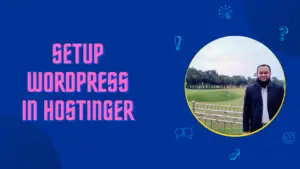With the constant evolution of web technologies, keeping your server’s software up to date is crucial for security, performance, and compatibility. PHP, being one of the most popular scripting languages for web development, releases new versions offering improvements and new features regularly. If you’re running a Debian 12 system and looking to upgrade or install PHP 8, you’ve come to the right place. This guide will walk you through the process step by step.
Table of Contents
Before You Begin
Before diving into the installation process, ensure your Debian system is up to date. This step is crucial for security and compatibility reasons. Open your terminal and execute the following commands:
sudo apt update sudo apt upgrade -yThis process updates the list of available packages and their versions and then upgrades the installed packages to their latest versions.
Installing Required Software
To add new repositories securely and manage your packages effectively, you’ll need some essential tools. If not already installed, you can get them by running:
sudo apt install -y software-properties-common lsb-release ca-certificates apt-transport-https curlThese tools will help you add new repositories, import their GPG keys, and ensure secure communication over HTTPS.
Adding the PHP Repository
Debian’s default repositories might not always provide the latest PHP versions. To get the latest PHP 8 version, you can add a third-party repository maintained by Ondřej Surý, a reputable Debian developer known for keeping PHP packages up to date. Execute the following commands to add his PHP repository:
sudo curl -fsSL https://packages.sury.org/php/apt.gpg | sudo gpg --dearmor -o /usr/share/keyrings/php.gpg echo "deb [signed-by=/usr/share/keyrings/php.gpg] https://packages.sury.org/php/ $(lsb_release -sc) main" | sudo tee /etc/apt/sources.list.d/php.listInstalling PHP 8
With the repository added, it’s time to install PHP 8. First, update your package list to include the newly added repository:
sudo apt updateNow, install PHP 8 by choosing the specific version you need. For PHP 8.0, use:
sudo apt install -y php8.1If you’re interested in PHP 8.1 or any other available version, adjust the version number in the command accordingly.
Verifying the Installation
After installation, it’s a good practice to verify that PHP is correctly installed and check its version. You can do this by running:
php -vThis command will display the PHP version installed, confirming the successful installation.
SSL Setup with Letsencrypt
Certbot is a tool that automates the process of obtaining and renewing SSL certificates from Let’s Encrypt. To install Certbot, run the following command:
First, install snap
sudo apt update
sudo apt install snapd -yRun this command on the command line on the machine to install Certbot.
sudo snap install --classic certbotExecute the following instructions on the command line on the machine to ensure that the certbot command can be run.
sudo ln -s /snap/bin/certbot /usr/bin/certbotRun this command to get a certificate and have Certbot edit your Apache configuration automatically to serve it, turning on HTTPS access in a single step.
sudo certbot --apacheAutomatic certificate renewal
This command will simulate the certificate renewal process to make sure everything is configured correctly. If there are no errors, Certbot will automatically renew your SSL certificate when it is due to expire.
To renew the Certificate automatically you need to set a cronjob via crontab. The commands are given below.
sudo crontab -e0 3 * * * sudo certbot renew >/dev/null 2>&1Conclusion
Congratulations! You’ve successfully installed PHP 8 on your Debian 12 system. This upgrade not only enhances your system’s capabilities with the latest PHP features but also ensures you’re up to date with security and performance improvements.
Remember, managing server software and configurations requires careful attention to detail and understanding the implications of each action. Always back up your data before making significant changes, and consider testing configurations in a development environment first.
By following this guide, you’re ensuring your web development environment remains robust, secure, and on the cutting edge. Happy coding!

